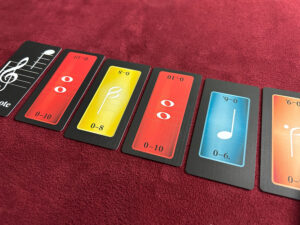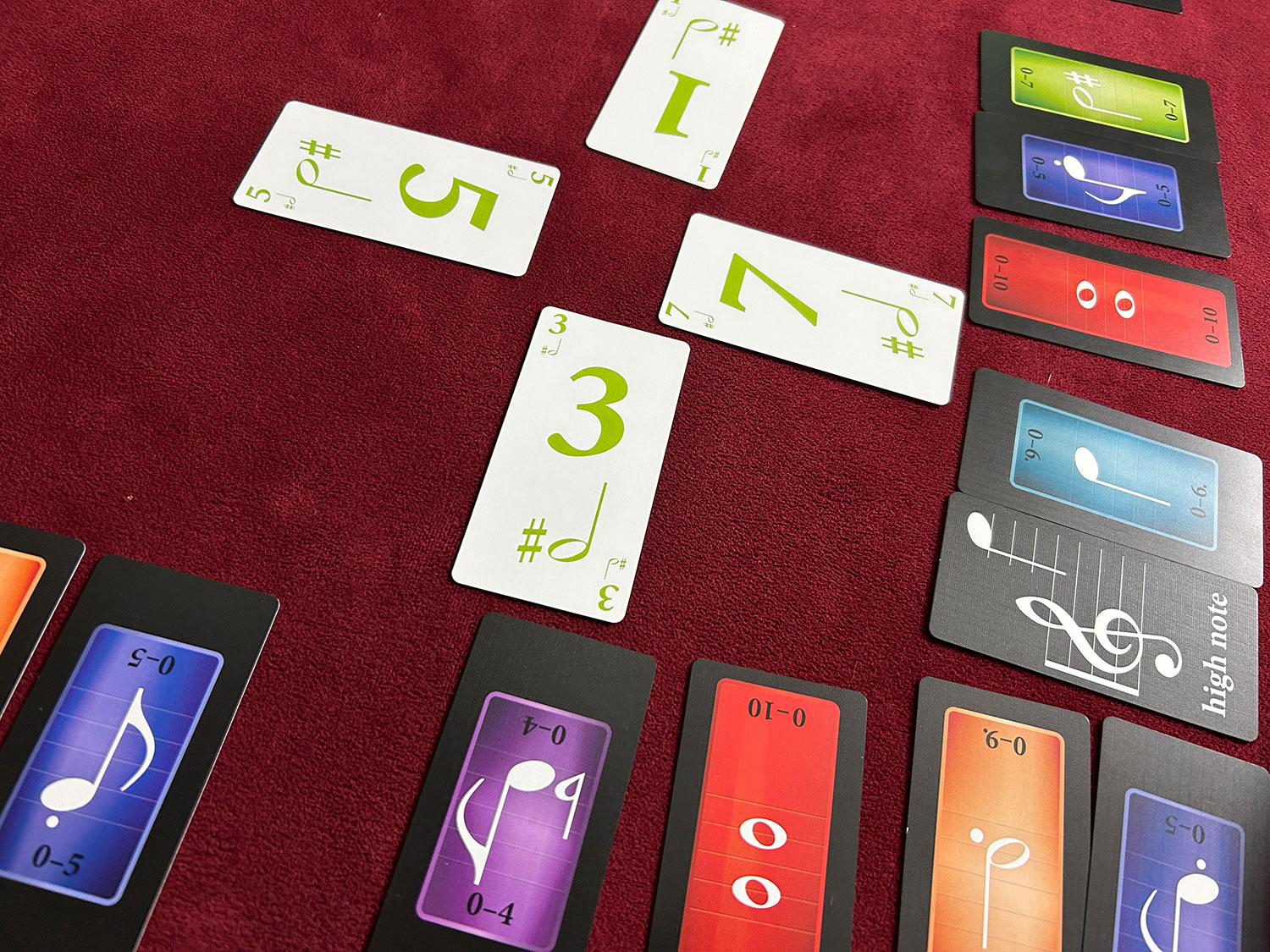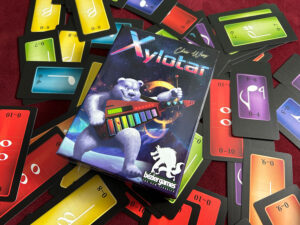 Bobby McColdsnap is a synth loving polar bear who wanted to play the keytar. According to the rulebook he acquired this love from some fictional song… I presume the real truth is he jammed out to Edgar Winter Group’s Frankenstein. That small fact check aside, it’s undoubted that the polar bear had keytar-jamming aspirations.
Bobby McColdsnap is a synth loving polar bear who wanted to play the keytar. According to the rulebook he acquired this love from some fictional song… I presume the real truth is he jammed out to Edgar Winter Group’s Frankenstein. That small fact check aside, it’s undoubted that the polar bear had keytar-jamming aspirations.
But, paws. Not good for keys. So, he commissioned a synth-xylophone that would be easier for a polar bear to operate. But now Bobby is wanted by Canadian police after a mysterious disappearance, and we’ve come across the xylotar plans. Players will be trying to put together the raddest sounding Xylotar.
In reality, this is a trick taking game. With cards and numbers on them. The theme only matters insofar as they dedicated like 10% of the rulebook to it. Which, honestly, I think is amazing.
Gameplay Overview:
Incredible Xyolar lore aside, the game itself is at least partly a very standard trick taking game. You’ll have a hand of cards from 8 different suits of varying lengths (one suit has only 0-3, another 0-10 for instance). Someone will lead a card into the trick, and you must follow suit if you can. If you can’t, you can play any card. Red suit, the longest suit, is always trump. Highest trump card wins or highest card in the led suit.

So far, that describes a large percentage of trick taking games that exist. Here’s the hook—you don’t get to see the numbers on your cards. The player to your right will sort your cards from highest to lowest for you and then you will lay them out, face down, in order. The suit is shown on the back, and you know the relative order of cards, but not the actual value. And of course, everyone else at the table can see it too.
Any time during the hand, after you play a card, you can look at any two adjacent cards that remain in your hand and choose one of them to be your bid for the number of tricks you think you will take during the round. After all tricks are played you get 1 point per trick and 5 bonus points for hitting your bid. Most points after three rounds is the winner.

Game Experience:
After reading through the overview you may be thinking, “So it’s a trick taking game with just a bunch of randomness where I play cards, I don’t know the value of.” And that is kind of how it starts. But after playing a trick you will gain some information about your hand, all cards to the right are lower than the card you played, and all the cards to the left are higher. And you start with some info… if you have a purple card, which can only be 0-4, in the middle of your hand you know there are no 5+ values to the right.

My favorite part of Xylotar is the bidding aspect. Generally speaking, in games where you can bid during the round it’s best to do it as late as possible so that you get the most information before committing to a certain number. But imagine it’s nearing the end of the round, you’ve won only a single trick, and you have three cards left, your two highest cards, and a blue card at the end of the Xylotar you are positive is a 1. If the person with the lead plays a blue card, you will be forced to add it into the trick before you can bid with it. And info is all publicly known so your opponents will almost for sure be trying to pull into tricks cards you are trying to bid with.
Now you may bid earlier to avoid this, but you’ll have less info on your hand and on the number of tricks you may actually end up with at the end of the round. For me this tension of when to bid and how to punish players who try to fly a little too close to the sun is what makes the game enjoyable.
Final Thoughts:
Trick taking games to me often fall into one of two categories. You have games that are very traditional like euchre, spades, hearts, and games that try to mirror those very closely like Diamonds and Wizard and such. You can easily play those over and over and wouldn’t necessarily be surprised to see them played at a retirement home by folks (no offense to retirees, I’m looking forward to those days).
Then there is the sort of weird trick taking games. Ushered in largely by Japanese designers but increasingly becoming enjoyed worldwide. These have weird wrinkles, crazy rules, and occasionally more randomness. I tend to view them more as experiences where the joy is seeing how it all comes together and obviously trying to win but enjoying the journey either way.
Xylotar is certainly the latter. It’s one of the best in that category that I’ve played in a while. It feels unique and certainly isn’t something you’d want to break out every day. But it never feels broken. Players have all the control and mostly the same information on their hand as their opponents. The scoring makes sense and rewards bidding accurately to help offset some of the pain of getting a less powerful hand.
Final Score: 4 Stars – A small amount of deduction and a fun bidding twist to trick taking.
 Hits:
Hits:
• Bidding system really drives lots of interesting gameplay decisions
• Start with minimal info on your own hand but can carefully gain more.
• It’s got good lore…
Misses:
• Most of the information being face up means that there isn’t always a lot of mystery other than what cards someone has left to bid.
• I wish there was some extra bonus for hitting a 0 bid.





















